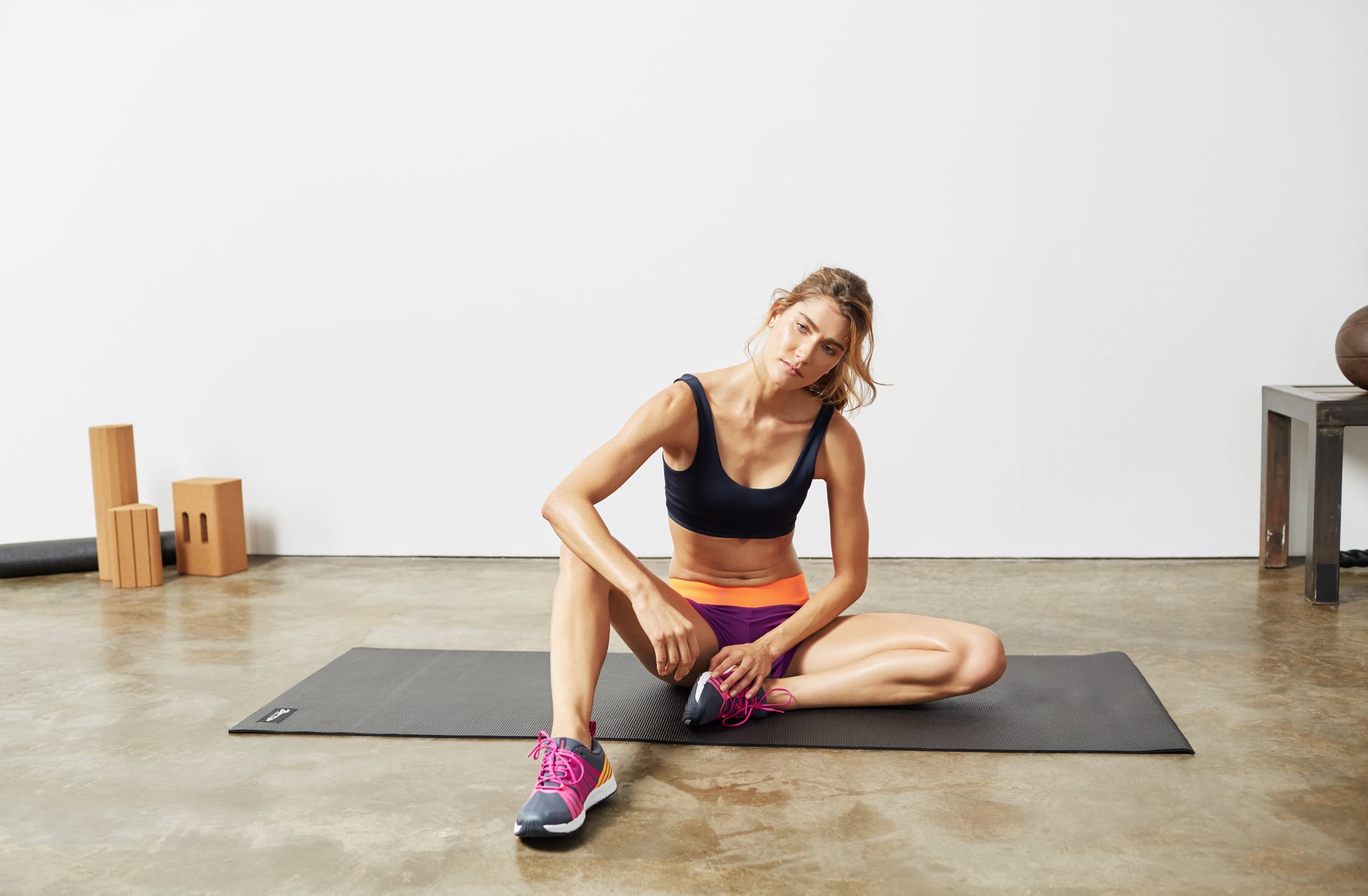
You've likely heard about rhabdomyolysis [1], or rhabdo for short, in relation to indoor cycling or CrossFit. It's a dangerous condition that can do serious damage to your kidneys and be life-threatening if you're not careful. And while it's caused by exercise, even healthy, fit people who work out regularly can still get it.
POPSUGAR talked to experts who broke down the symptoms to watch out for and how to prevent it. If you're embarking on a particularly tough workout, such as CrossFit's Murph [2], be sure to pay attention to the signs you may be getting rhabdo.
What Is Rhabdo?
Rhabdomyolysis is the rapid breakdown of skeletal muscle tissue. When this happens, a protein from your muscle tissue called myoglobin enters into your bloodstream. And since myoglobin is a waste your body doesn't need, your kidneys have to work overtime to filter it out. The problem is that your kidneys can only do so much; the amount of waste that enters your bloodstream can overload your kidneys, which can lead to kidney damage or kidney failure, which is potentially fatal.
Overexerting yourself [3] in a workout can lead to exertional rhabdomyolysis, but other causes of rhabdo include trauma, such as getting in a car accident or a fall; illegal drugs, such as cocaine, amphetamines, or heroin; viral infections; or diseases of the muscles, such as congenital muscle enzyme deficiency.
What Are the Symptoms?
After an intense workout, you should expect to be sore. But with exertional rhabdo, you will experience soreness and pain unlike any that you've had before. Vijay Jotwani, MD, the primary care sports medicine physician at Houston Methodist, said this pain is the biggest symptom. If you overworked your biceps or triceps, for example, you may not be able to fully extend your arms.
Another symptom is the darkening of your urine [4], sometimes to the point of it looking like cola, thanks to the myoglobin entering your urine. You may also feel generally fatigued or uneasy. If you get to the point of kidney damage, you may experience nausea, vomiting, lethargy, or confusion, Dr. Jotwani said.
How Do I Prevent It?
Since exertional rhabdo is caused by overexerting yourself, it's important to pay attention to your body during your workouts, especially if you're embarking on something tougher than normal. "Rhabdomyolysis is completely preventable and occurs when you exceed your body's limits," Dr. Jotwani said. "It's important to gradually increase the intensity of your workouts to avoid rhabdo." This is especially important if you're an inexperienced exerciser and working out at an intense level for the first time.
But it's not just inexperienced athletes who are susceptible to rhabdo; fit people and frequent exercisers can still get it, too.
"Even the most skilled, well-trained and physically fit athletes are potentially vulnerable to rhabdo," said Todd S. Cutler, MD, a hospitalist at New York-Presbyterian/Weil Cornell Medical Centre and author of a 2016 study about rhabdomyolysis [5] published in the Clinical Journal of Sports Medicine.
"This is especially true if they're pushed hard enough at a rigorous, high-intensity physical activity [6] or workout they've never tried before and that their body has never experienced," he said. "In this instance, the emphasis is less on a person's fitness level. Instead, it's about whether or not they've been properly trained, prepared, and are ready to be physically active at a high intensity level or not."
You should also be sure to hydrate before and after a particularly difficult workout. Although you may want to celebrate that Murph or intense Spin class with a beer afterward, be sure you drink plenty of water [7] and possibly an electrolyte-rich beverage, such as Gatorade.
How Should I Seek Treatment?
As soon as you notice any of these symptoms, especially muscle pain and dark urine, you should seek professional help immediately. Dr. Jotwani recommends going to the ER, where they'll perform a blood and/or urine test to diagnose (or rule out) rhabdo.
Fortunately, you can expect a full recovery from rhabdo if you're treated early and properly. If you don't seek treatment early enough, it may lead to lasting kidney damage or kidney failure. You'll be treated with intravenous (IV) fluids to prevent kidney failure. Depending on how severe your rhabdo is, you may need to be hospitalized or return every few days for treatment.
Although rahbdo sounds scary, it is preventable; just be sure you are paying attention to your body, keeping an eye out for symptoms, and always mindful of how hard you are actually pushing yourself in the gym.
